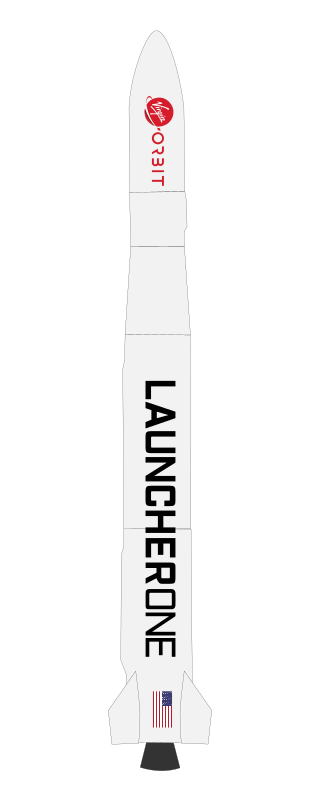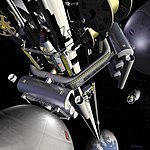Human spaceflight programs have been conducted, started, or planned by multiple countries and companies. The age of crewed rocket flight was initiated by Fritz von Opel who piloted the world's first rocket-propelled flight on 30 September 1929. All space flights depend on rocket technology; von Opel was the co-designer and financier of the visionary project. Until the 21st century, human spaceflight programs were sponsored exclusively by governments, through either the military or civilian space agencies. With the launch of the privately funded SpaceShipOne in 2004, a new category of human spaceflight programs – commercial human spaceflight – arrived. By the end of 2022, three countries and one private company (SpaceX) had successfully launched humans to Earth orbit, and two private companies had launched humans on a suborbital trajectory.

A spaceplane is a vehicle that can fly and glide like an aircraft in Earth's atmosphere and maneuver like a spacecraft in outer space. To do so, spaceplanes must incorporate features of both aircraft and spacecraft. Orbital spaceplanes tend to be more similar to conventional spacecraft, while sub-orbital spaceplanes tend to be more similar to fixed-wing aircraft. All spaceplanes to date have been rocket-powered for takeoff and climb, but have then landed as unpowered gliders.

A mother ship, mothership or mother-ship is a large vehicle that leads, serves, or carries other smaller vehicles. A mother ship may be a maritime ship, aircraft, or spacecraft.

Pegasus is an air-launched launch vehicle developed by Orbital Sciences Corporation (OSC) and now built and launched by Northrop Grumman. Pegasus is the world's first privately developed orbital launch vehicle. Capable of carrying small payloads of up to 443 kg (977 lb) into low Earth orbit, Pegasus first flew in 1990 and remains active as of 2021. The vehicle consists of three solid propellant stages and an optional monopropellant fourth stage. Pegasus is released from its carrier aircraft at approximately 12,000 m (39,000 ft), and its first stage has a wing and a tail to provide lift and altitude control while in the atmosphere. Notably, the first stage does not have a thrust vector control (TVC) system.

Virgin Galactic Holdings, Inc. is an American spaceflight company founded by Richard Branson and the Virgin Group conglomerate which retains an 11.9% stake through Virgin Investments Limited. It is headquartered in California, and operates from New Mexico. The company is developing commercial spacecraft and aims to provide suborbital spaceflights to space tourists. Virgin Galactic's suborbital spacecraft are air launched from beneath a carrier airplane known as White Knight Two. Virgin Galactic's maiden spaceflight occurred in 2018 with its VSS Unity spaceship. Branson had originally hoped to see a maiden spaceflight by 2010, but the date was delayed for several years, and then delayed again, primarily due to the October 2014 crash of VSS Enterprise.

VSS Enterprise was the first SpaceShipTwo (SS2) spaceplane, built by Scaled Composites for Virgin Galactic. As of 2004, it was planned to be the first of five commercial suborbital SS2 spacecraft planned by Virgin Galactic. It was also the first ship of the Scaled Composites Model 339 SpaceShipTwo class, based on upscaling the design of record-breaking SpaceShipOne.

The Scaled Composites Model 339 SpaceShipTwo (SS2) is an air-launched suborbital spaceplane type designed for space tourism. It is manufactured by The Spaceship Company, a California-based company owned by Virgin Galactic.

The Spaceship Company (TSC) is a British/American spacecraft manufacturing company that was founded by Burt Rutan and Richard Branson in mid-2005 and was jointly owned by Virgin Group (70%) and Scaled Composites (30%) until 2012 when Virgin Galactic became the sole owner. TSC was formed to own the technology created by Scaled for Virgin Galactic's Virgin SpaceShip program. This includes developments on the care-free reentry system and cantilevered-hybrid rocket motor, licensed from Paul Allen and Burt Rutan's Mojave Aerospace. The company is manufacturing Virgin Galactic's spacecraft and will sell spacecraft to other buyers. The suborbital launch system offered will include the SpaceShipTwo spacecraft and the White Knight Two carrier aircraft.

VSSUnity, previously referred to as VSS Voyager, is a SpaceShipTwo-class suborbital rocket-powered crewed spaceplane. It is the second SpaceShipTwo to be built and is part of the Virgin Galactic fleet. It first reached space as defined by the United States on 13 December 2018, on the VP-03 mission.

Stargazer is a Lockheed L-1011 TriStar built in 1974, that was modified in 1994 for use by Orbital Sciences as a mother ship launch pad for the Pegasus launch vehicle. As of October 2022, 45 rockets have been launched from it, using the Pegasus-H and Pegasus-XL configurations. As of 2019, Stargazer is the only L-1011 airframe still airworthy.
Aircraft can have different ways to take off and land. Conventional airplanes accelerate along the ground until sufficient lift is generated for takeoff, and reverse the process to land. Some airplanes can take off at low speed, this being a short takeoff. Some aircraft such as helicopters and Harrier jump jets can take off and land vertically. Rockets also usually take off vertically, but some designs can land horizontally.

Stratolaunch LLC is an American aerospace company providing high-speed flight test services. It was originally formed in 2011 to develop a new air-launched space transportation system, with its corporate headquarters located in Seattle, Washington. The company and development project were officially announced in December 2011 by Microsoft co-founder Paul Allen and Scaled Composites founder Burt Rutan, who had previously collaborated on the creation of SpaceShipOne.

LauncherOne was a two-stage orbital launch vehicle developed and flown by Virgin Orbit that had operational flights from 2021 to 2023, after being in development from 2007 to 2020. It was an air-launched rocket, designed to carry smallsat payloads of up to 300 kg (660 lb) into Sun-synchronous orbit (SSO), following air launch from a carrier aircraft at high altitude. The rocket was carried to the upper atmosphere on a modified Boeing 747-400, named Cosmic Girl, and released over ocean. Initial work on the program was done by Virgin Galactic, another Virgin Group subsidiary, before a separate entity — Virgin Orbit — was formed in 2017 to complete development and operate the launch service provider business separately from the passenger-carrying Virgin Galactic business.

Spirit of Mojave, previously Cosmic Girl is a Boeing 747-400 aircraft. A former passenger airliner operated by Virgin Atlantic, it was purchased by Virgin Galactic in 2015 to be used as the first stage launch platform for the air launch stage of the smallsat orbital launch vehicle, the LauncherOne. In 2017, the aircraft was transferred to the orbital launch subsidiary, Virgin Orbit, and its livery updated to Virgin Orbit. LauncherOne attempted its first launch on 25 May 2020; the launch was a failure. The first successful launch took place on 17 January 2021.

Kelly Latimer is a combat veteran, retired United States Air Force lieutenant colonel, and commercial spaceship pilot. She was the first female research pilot to join the NASA Armstrong Flight Research Center. She works with Virgin Galactic and Virgin Orbit, and was the latter's pilot in command for their first rocket launch in January 2021. Latimer flew the T-38, T-34, Lockheed C-141 Starlifter, Boeing C-17, 747 Shuttle Carrier Aircraft and the Stratospheric Observatory for Infrared Astronomy 747SP. On August 10, 2023 Latimer co-piloted VSS Unity along with Frederick W. Sturckow as commercial astronaut pilot of Virgin's Galactic 02.

VP-03 was a sub-orbital spaceflight of the SpaceShipTwo-class VSS Unity which took place on 13 December 2018, piloted by Mark P. Stucky and co-piloted by Frederick W. "CJ" Sturckow.

Virgin Galactic Unity 22 was a sub-orbital spaceflight of the SpaceShipTwo-class VSS Unity which launched on 11 July 2021. The crew consisted of pilots David Mackay and Michael Masucci as well as passengers Sirisha Bandla, Colin Bennett, Beth Moses, and Richard Branson.

Virgin Galactic Unity 25 was a sub-orbital spaceflight by Virgin Galactic that took place on 25 May 2023. The flight used their SpaceShipTwo spaceplane VSS Unity. The crew consisted of six Virgin Galactic employees. Unity 25 was the first spaceflight for the company since Unity 22 in 2021, when founder Richard Branson flew to space.














